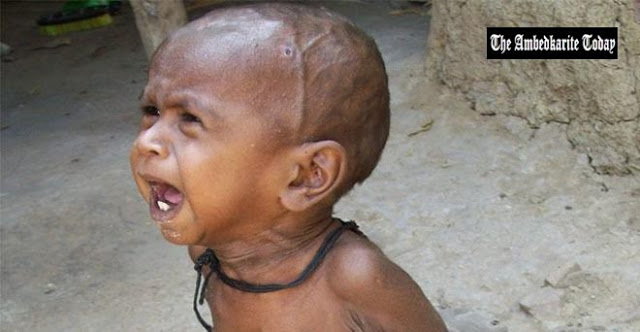Detailed analysis of mortality rate among under-five children using data from the National Family Health Survey (NFHS) between 1992 and 2016
The mortality rate of under-five children among Dalit and tribal communities is 76 per cent higher than the rest of the population.TNIE Reported
The enormous gap has been revealed by a detailed analysis of mortality rate among under-five children using data from the National Family Health Survey (NFHS) between 1992 and 2016.
Researchers associated with the New Delhi based Indian Institute of Dalit Studies and Austria based Wittgenstein Centre for Demography and Global Human Capital and International Institute for Applied Systems Analysis carried out the analysis.
The analysis is titled ‘The persistent influence of caste on under-five mortality: Factors that explain the caste-based gap in high focus Indian states’
‘Special attention to margnalised groups’
The researchers had sought to examine whether welfare programmes like the National Rural Health Mission, launched in 2005 and renamed NHM in 2013, to improve the availability of and access to quality healthcare for the women and children, especially in rural areas, has had impact on caste-mortality rate of children in the country.
The results showed that under-five mortality among SC children belonging to Bihar, Jharkhand, Madhya Pradesh, Rajasthan and Uttar Pradesh are substantially higher than that of non-SC/ST children.
On the other hand, under-five mortality rate of ST children belonging to Chhattisgarh, Jharkhand, Madhya Pradesh, Odisha and Rajasthan is relatively higher than the corresponding mortality of non-SC/ST population.
Oommen John, a senior research fellow and internal medicine specialist at The George Institute for Global Health, said while the findings are on expected lines, these should give rise to a more focused strategy to cover vulnerable communities. “Frontline health workers, for example, can be sensitised to give special attention to cover marginalised groups,” he said.
The big gap
Researchers have pointed out that 83% caste-based gap in the under-five deaths is due to disparity in women’s education and household wealth between the SC/ST and non-SC/ST population.
References- National Family Health Survey (NFHS), The new indian express

